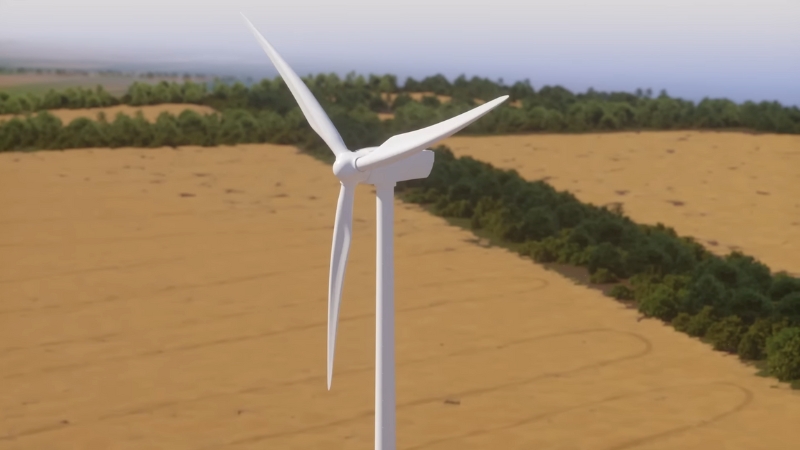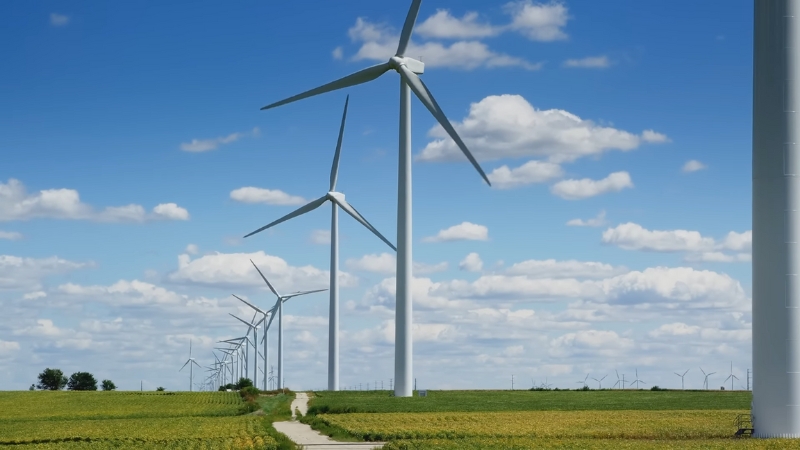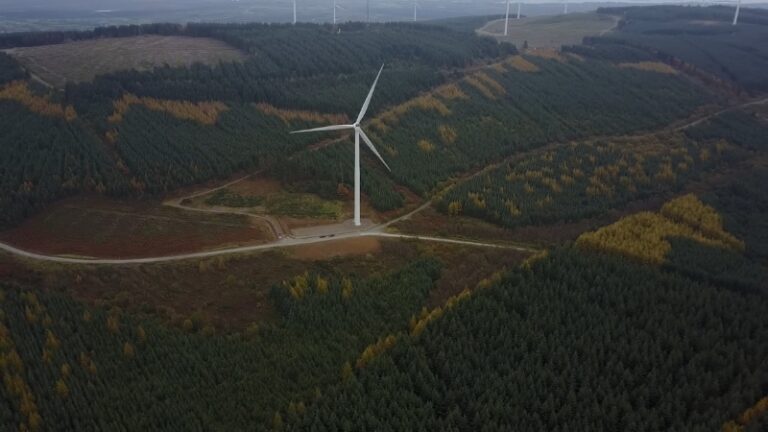Wind energy has become one of the fastest-growing renewable energy sources in the world. As countries look for cleaner alternatives to fossil fuels, wind power stands out for its ability to generate electricity without releasing carbon dioxide or other greenhouse gases.
The technology behind it, wind turbines that convert kinetic energy from air movement into electrical energy, has advanced rapidly over the past two decades.
But while wind power is often praised as a cornerstone of a sustainable future, it is not without its challenges. Land use, noise, wildlife impact, and the cost of infrastructure are all factors that make the debate around wind energy more complex than it may first appear.
How Wind Energy Works

At its core, wind energy converts kinetic energy from moving air into mechanical energy, which is then transformed into electricity through a generator.
A typical wind turbine has three main components:
Modern wind farms often include dozens or even hundreds of turbines connected to a grid. The turbines can be placed on land (onshore) or in the ocean (offshore), where winds are generally stronger and more consistent.
Type
Location
Average Capacity
Advantages
Drawbacks
Onshore Wind Farms
Inland hills, plains, or ridges
2–4 MW per turbine
Easier to install, lower cost
Variable wind speeds, noise concerns
Offshore Wind Farms
Coastal waters or open seas
6–12 MW per turbine
Stronger, more consistent winds
Higher construction and maintenance costs
Advantages of Wind Energy

1. Clean and Renewable Source
Wind energy is one of the most sustainable power sources available. Unlike fossil fuels, wind turbines do not emit carbon dioxide, sulfur dioxide, or nitrogen oxides during operation. Once installed, they produce energy without depleting any natural resources.
In 2024, wind power accounted for nearly 10% of global electricity generation, according to the International Energy Agency (IEA). Every megawatt-hour of wind-generated electricity prevents roughly 0.9 metric tons of CO₂ emissions compared to coal-based power.
2. Cost-Effective in the Long Term
Although building wind farms requires high upfront investment, operating costs are relatively low. Once turbines are installed, fuel ue l”, the wind is free. Over time, this makes wind power highly competitive with fossil fuels and even cheaper in many regions.
In the United States, the Levelized Cost of Energy (LCOE) for onshore wind has dropped from around $70 per megawatt-hour in 2009 to less than $30 in 2025, making it one of the lowest-cost energy sources available.
3. Energy Independence and Security
Countries investing in wind power reduce their reliance on imported oil, gas, and coal. For example, Denmark generates more than 50% of its electricity from wind, making it less vulnerable to global energy price fluctuations.
Domestic wind energy production not only supports local economies but also creates thousands of jobs in turbine manufacturing, installation, and maintenance.
4. Scalable and Flexible
Wind energy systems can be deployed at different scales, from a single small turbine powering a rural home to vast offshore wind farms supplying electricity to millions.
This flexibility makes it adaptable to different regions, from flat plains in the U.S. Midwest to coastal areas of Northern Europe.
Region
Notable Wind Capacity (2025)
Key Feature
United States
~150 GW
Focus on large onshore farms (Texas, Iowa, Oklahoma)
China
~450 GW
Global leader with rapid offshore expansion
Europe
~250 GW
Offshore dominance (UK, Germany, Denmark)
Disadvantages of Wind Energy
1. Intermittency and Reliability
The biggest challenge with wind power is that wind doesn’t always blow. Energy output fluctuates depending on weather, seasons, and geography.
This variability makes wind less reliable as a single energy source unless supported by storage systems or backup generation like hydropower or natural gas.
Grid operators must balance supply and demand in real-time, which can be difficult when a large portion of electricity comes from variable renewables. Advances in battery storage and smart grids are helping to address this issue, but the problem remains a technical and economic challenge.
2. High Initial Costs
While operating costs are low, the installation costs for wind farms, especially offshore, are significant. The expense of transportation, specialized cranes, and grid connections can reach millions per turbine.
Expense Category
Onshore (per MW)
Offshore (per MW)
Equipment & Construction
$1.3–1.8 million
$3.5–5 million
Grid Connection
$0.2–0.4 million
$1.0–1.5 million
Maintenance (annual)
$30,000–$60,000
$100,000–$200,000
Despite these costs, government incentives and falling turbine prices are helping to make wind projects more financially viable.
3. Impact on Wildlife and Environment
Wind turbines can affect local ecosystems. Bird and bat collisions, habitat disruption, and noise pollution are concerns, particularly for large onshore farms near migration routes.
Offshore wind projects can also alter marine environments during construction.
However, modern design improvements, such as radar-based shutdown systems and wildlife monitoring, are reducing these impacts. Compared to coal or oil extraction, wind energy still has a far smaller environmental footprint.
4. Noise and Visual Impact
Some communities oppose wind farms due to aesthetic and noise concerns. The low-frequency sound of turbines, while generally minimal, can still disturb residents living very close to installations.
Large turbines also alter the visual landscape, which can affect tourism or property values in some areas.
Community consultation and proper site selection have become standard parts of wind project planning to minimize these issues.
5. Land Use and Infrastructure Requirements
Onshore wind farms require large areas of open land, although most of the space between turbines remains usable for agriculture or grazing. Building access roads, transmission lines, and maintenance facilities can still change local landscapes.
Offshore wind solves many of these space concerns but introduces logistical challenges and higher maintenance costs due to corrosion and accessibility.
The Future of Wind Energy
View this post on Instagram
Despite its challenges, wind energy is central to global climate strategies. The International Renewable Energy Agency (IRENA) projects that by 2050, wind could supply up to 35% of global electricity.
Technological advances like floating offshore turbines, AI-based wind forecasting, and more efficient blade designs are rapidly improving efficiency and reducing costs.
In addition, combining wind with solar power and energy storage systems can help stabilize grids and provide round-the-clock renewable power. Hybrid wind-solar farms are already operational in parts of China, India, and the United States, showing how collaboration between different renewable technologies can overcome their individual weaknesses.
Final Thoughts
@greenpeaceuk Wind turbines are actually BAD for the environment? @olifro.st explains why this is NOT true… #Renewables #Windpower ♬ original sound – Greenpeace UK
Wind energy is not a perfect solution, but it is a powerful step toward a cleaner, more resilient energy future. Its strength, renewability, low emissions, and long-term cost efficiency make it a cornerstone of global sustainability efforts.
However, it comes with trade-offs: high upfront costs, intermittent output, and environmental considerations. The success of wind energy will depend on how effectively we can balance these factors through technology, policy, and smart planning.

